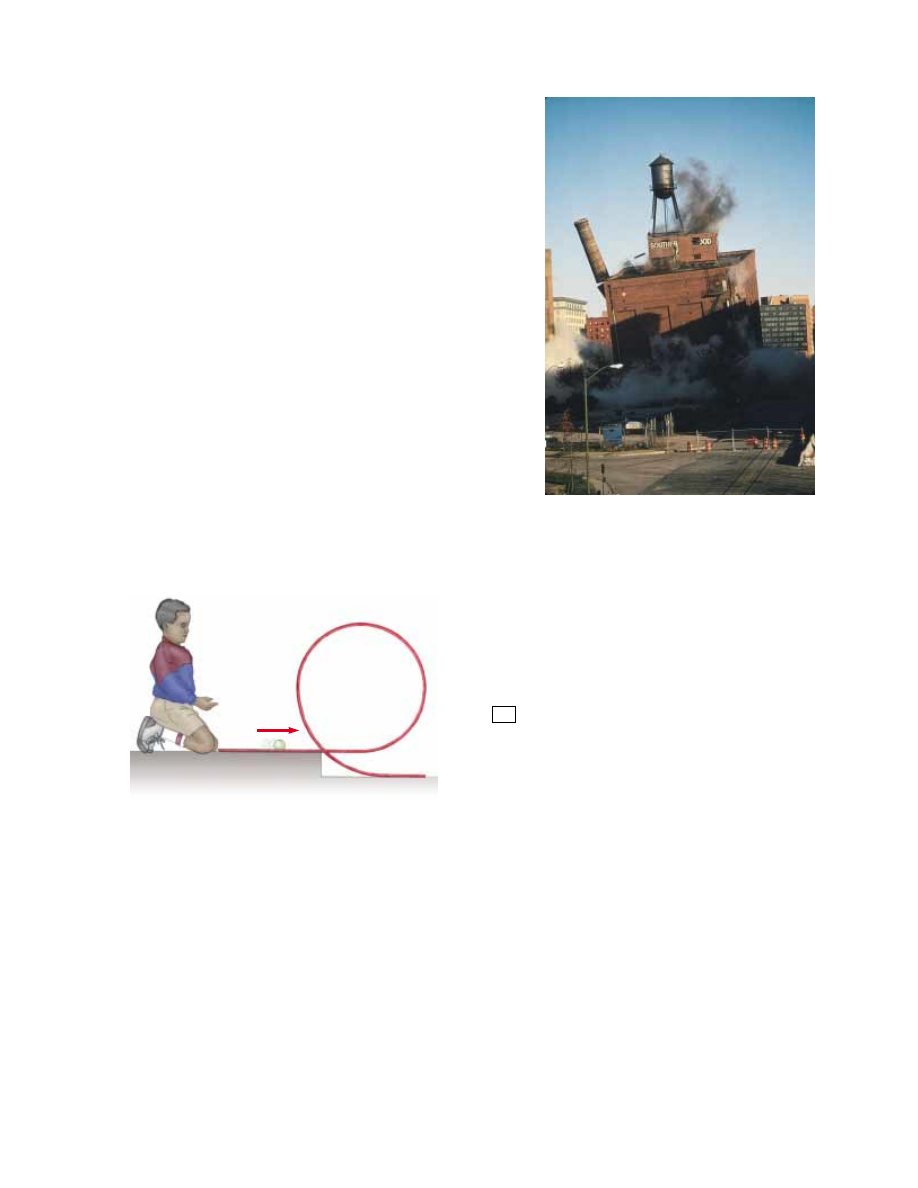Physics For Scientists And Engineers 6E - part 83

Problems
329
friction required to maintain pure rolling motion for the
disk?
54.
A uniform solid disk and a uniform hoop are placed side
by side at the top of an incline of height h. If they are re-
leased from rest and roll without slipping, which object
reaches the bottom first? Verify your answer by calculating
their speeds when they reach the bottom in terms of h.
55.
A metal can containing condensed mushroom soup has
mass 215 g, height 10.8 cm, and diameter 6.38 cm. It is
placed at rest on its side at the top of a 3.00-m-long incline
that is at 25.0° to the horizontal, and it is then released to
roll straight down. Assuming mechanical energy conserva-
tion, calculate the moment of inertia of the can if it takes
1.50 s to reach the bottom of the incline. Which pieces of
data, if any, are unnecessary for calculating the solution?
56.
A tennis ball is a hollow sphere with a thin wall. It is set
rolling without slipping at 4.03 m/s on a horizontal sec-
tion of a track, as shown in Figure P10.56. It rolls around
the inside of a vertical circular loop 90.0 cm in diameter
and finally leaves the track at a point 20.0 cm below the
horizontal section. (a) Find the speed of the ball at the top
of the loop. Demonstrate that it will not fall from the
track. (b) Find its speed as it leaves the track.
What If?
(c) Suppose that static friction between ball and track were
negligible, so that the ball slid instead of rolling. Would its
speed then be higher, lower, or the same at the top of the
loop? Explain.
Additional Problems
57.
As in Figure P10.57, toppling chimneys often break apart
in mid-fall because the mortar between the bricks cannot
withstand much shear stress. As the chimney begins to fall,
shear forces must act on the topmost sections to accelerate
them tangentially so that they can keep up with the rota-
tion of the lower part of the stack. For simplicity, let us
model the chimney as a uniform rod of length " pivoted at
the lower end. The rod starts at rest in a vertical position
(with the frictionless pivot at the bottom) and falls over
under the influence of gravity. What fraction of the length
of the rod has a tangential acceleration greater than
g sin !, where ! is the angle the chimney makes with the
vertical axis?
58.
Review problem. A mixing beater consists of three thin
rods, each 10.0 cm long. The rods diverge from a central
hub, separated from each other by 120°, and all turn in the
same plane. A ball is attached to the end of each rod. Each
ball has cross-sectional area 4.00 cm
2
and is so shaped that
it has a drag coefficient of 0.600. Calculate the power in-
put required to spin the beater at 1 000 rev/min (a) in air
and (b) in water.
A 4.00-m length of light nylon cord is wound around a
uniform cylindrical spool of radius 0.500 m and mass
1.00 kg. The spool is mounted on a frictionless axle and is
initially at rest. The cord is pulled from the spool with a
constant acceleration of magnitude 2.50 m/s
2
. (a) How
much work has been done on the spool when it reaches
an angular speed of 8.00 rad/s? (b) Assuming there is
enough cord on the spool, how long does it take the spool
to reach this angular speed? (c) Is there enough cord on
the spool?
60.
A videotape cassette contains two spools, each of radius r
s
,
on which the tape is wound. As the tape unwinds from the
first spool, it winds around the second spool. The tape
moves at constant linear speed v past the heads between
the spools. When all the tape is on the first spool, the tape
has an outer radius r
t
. Let r represent the outer radius of
the tape on the first spool at any instant while the tape is
being played. (a) Show that at any instant the angular
speeds of the two spools are
(b) Show that these expressions predict the correct maxi-
mum and minimum values for the angular speeds of the
two spools.
&
1
"
v/r
and
&
2
"
v/(r
s
2
)
r
t
2
%
r
2
)
1/2
59.
Figure P10.56
Figure P10.57 A building demolition site in Baltimore, MD. At
the left is a chimney, mostly concealed by the building, that has
broken apart on its way down. Compare with Figure 10.19.
Jerry W
achter / Photo Researchers, Inc.